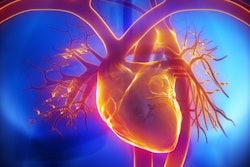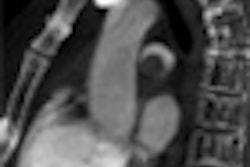Should radiologists working at community hospitals be gatekeepers to protect children from low-value exams that carry a high radiation burden? Pediatric radiologists suggest so, based on results of a study published in the June issue of the American Journal of Roentgenology.
Because children and teenagers develop pulmonary emboli (PE) at rates substantially lower than adults, exposing them to the radiation dose of a CT angiography (CTA) exam before consulting with a radiologist could be a huge disservice. Yet if an analysis of two community hospitals located in a single Midwestern city is indicative, this is happening to the majority of children who present with PE symptoms at adult-oriented community hospitals (AJR, June 2011, Vol. 196:6, pp. W823-W830).
The analysis showed that out of a group of 130 consecutive patients between 11 and 19 years of age who had a pulmonary CTA exam performed to diagnose or rule out a pulmonary embolism, only 4.6% of the total actually had a PE.
The study's population was drawn from patients ages 19 and younger who had pulmonary CT at an 800-bed hospital during a 24-month period starting in July 2006, and from those scanned at a 500-bed hospital during a 12-month period starting in January 2007. The cohort included 130 patients, six of whom had more than one pulmonary CTA exam. The majority were female (75.4%) and were older teenagers (median age of 18). Patients who had the CTA scan were as young as 11, but only 15% were younger than age 16.
Lead author Dr. Ryan W. Arnold of the department of radiology of Children's Hospital Boston and peers initially reviewed the patients' medical records and radiology reports. An experienced thoracic radiologist blinded to all patient information independently interpreted the scans. This radiologist assessed the quality of the studies, determined whether PE was present (and if so, the location of the embolus/emboli), and provided an alternative diagnosis when it was not.
A nonblinded radiologist reviewed the two reports. Interpretations were identical for 67% of the studies. Major discrepancies were identified in 13% of the cases, which were then interpreted by a pediatric radiologist with a subspecialty in thoracic imaging blinded to all findings.
Major discrepancies included two false-positive and two false-negative diagnoses of PE, misidentification of normal thymic tissues as mediastinal masses, failure to note enlarged lymph nodes, missed breast fibroadenoma, and misidentification of a 1.1-cm mediastinal lymph node as adenopathy.
Fever than 5% of the patients who had a pulmonary CTA exam were diagnosed with PE, all of whom were 16 years of age or older. The authors conducted an analysis of a month of radiology reports for adults who had the same symptoms and underwent the same procedure at the two hospitals. Out of more than 6,000 cases, 16% of adult patients were diagnosed with PE.
In the current study, three times as many girls than boys had a pulmonary CTA, a finding that disturbed the research team.
"Children undergoing pulmonary CTA receive direct radiation to breast and thyroid tissue. One chest pulmonary CTA is roughly equivalent to 137 chest radiography series or 23 mammography series. In other words, a 15-year-old girl undergoing chest pulmonary CTA will receive with that single examination the equivalent of more than half a lifetime's worth of screening mammograms," they wrote.
The authors were also concerned that more than half of the patients did not have chest radiographs performed prior to the pulmonary CTA exam. Additionally, even when findings such as pneumothorax or pulmonary consolidations were diagnosed, many patients still had the pulmonary CTA exam, which showed the same diagnosis.
The authors recommended that the use of pulmonary CTA as a first-line study in adult-centered community hospitals to exclude PE be subject to advance review and approval by a staff radiologist.
Alternative diagnoses made of conditions exhibiting symptoms similar to PE included pulmonary consolidations (13), pneumothorax (3), pneumodiastinum (2), enlarged main pulmonary arteries (2), and pericardial effusion (2). In this study, almost half of the exams showed completely normal results.




















